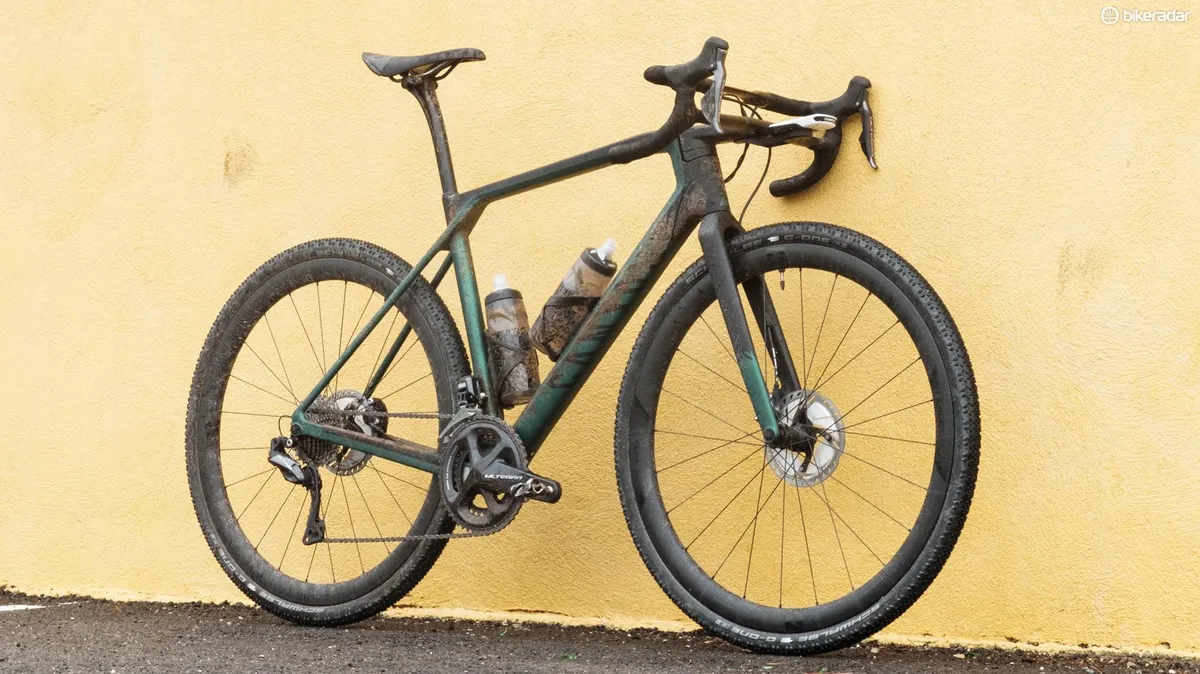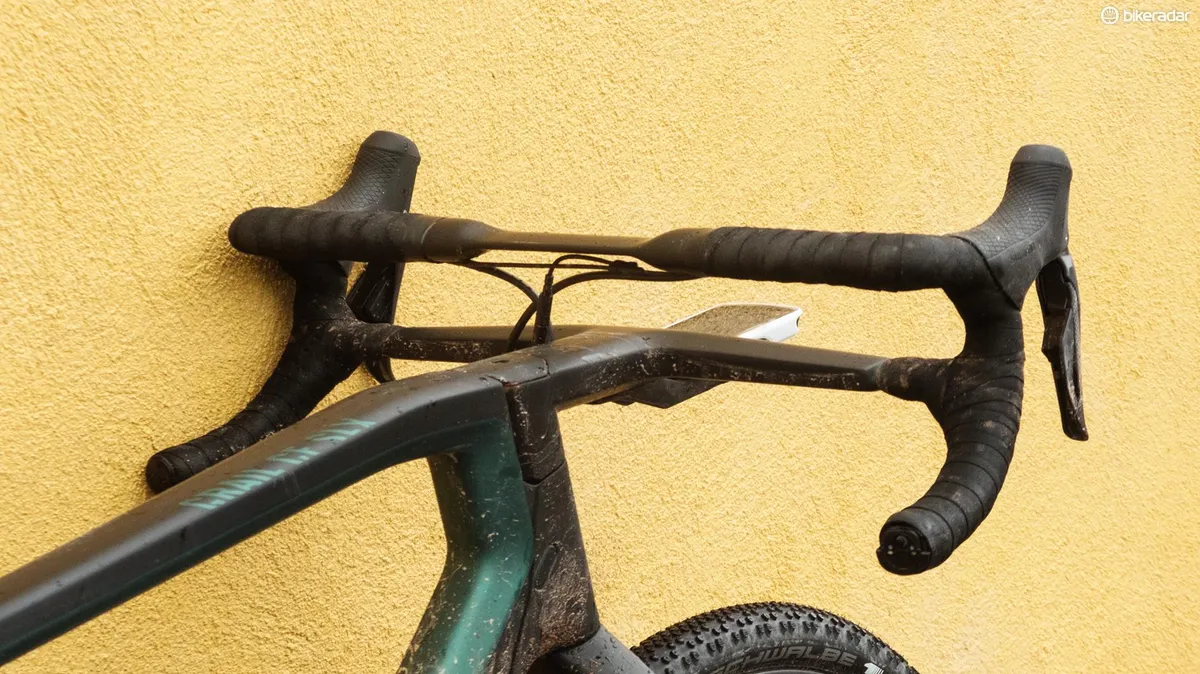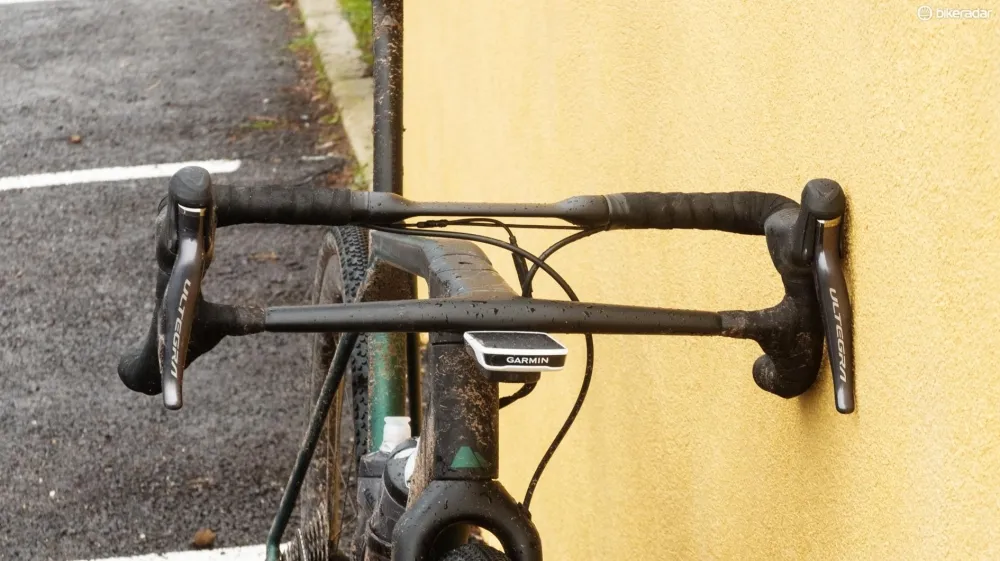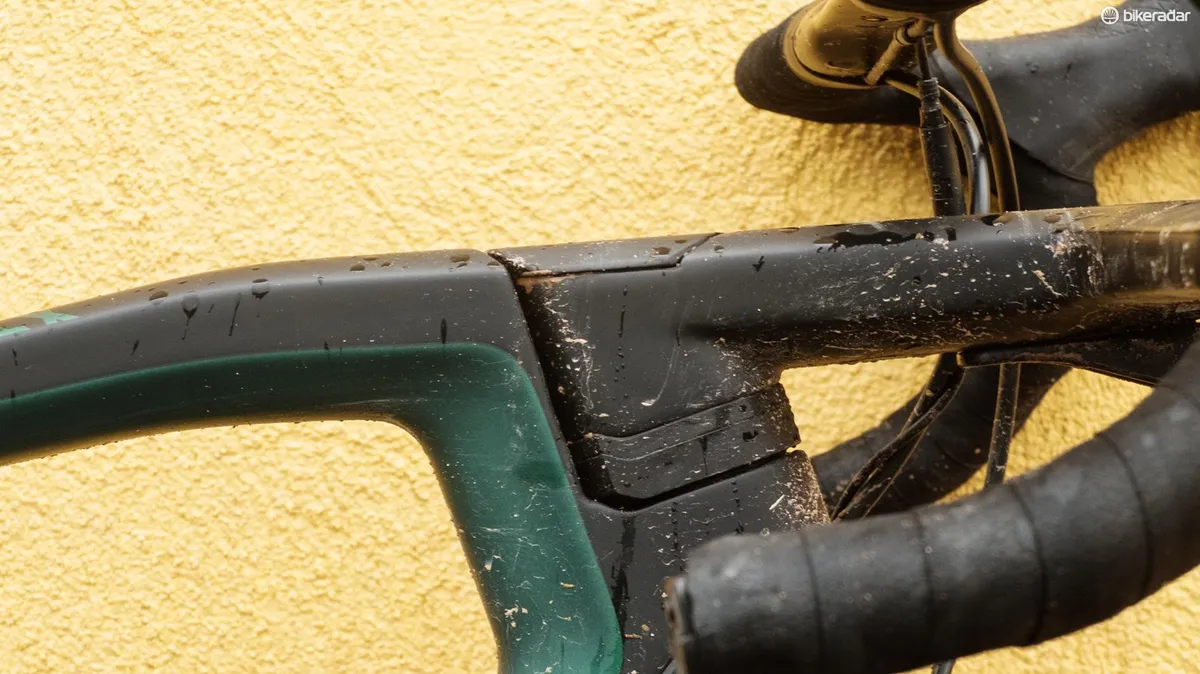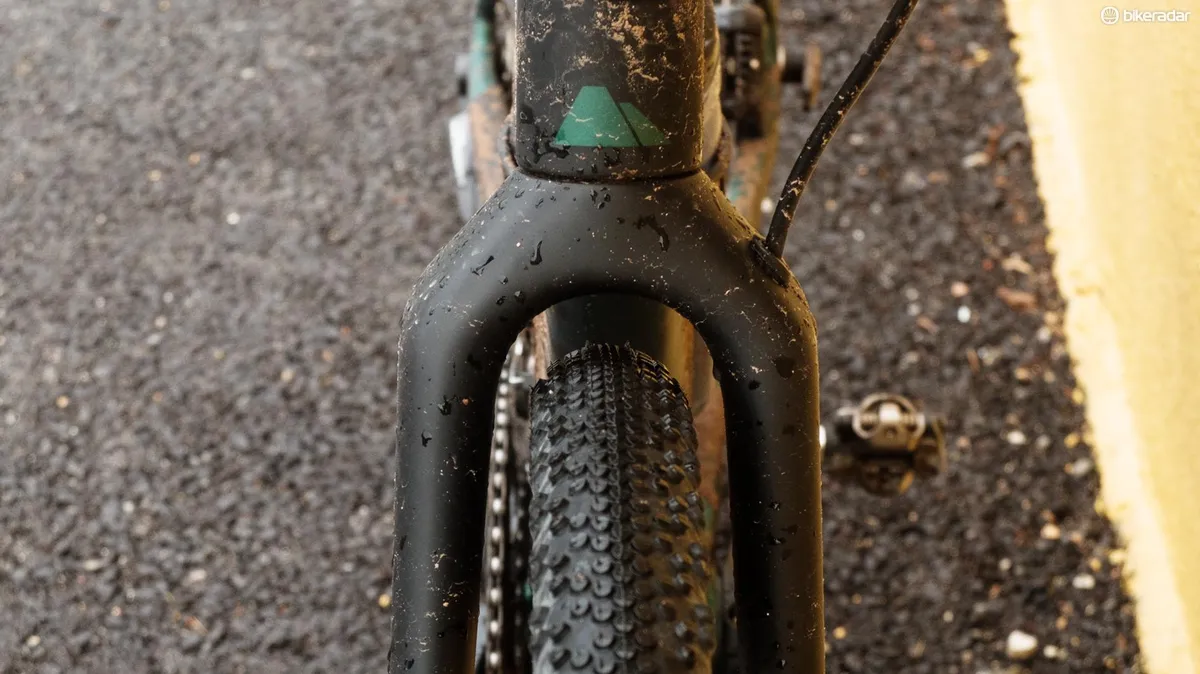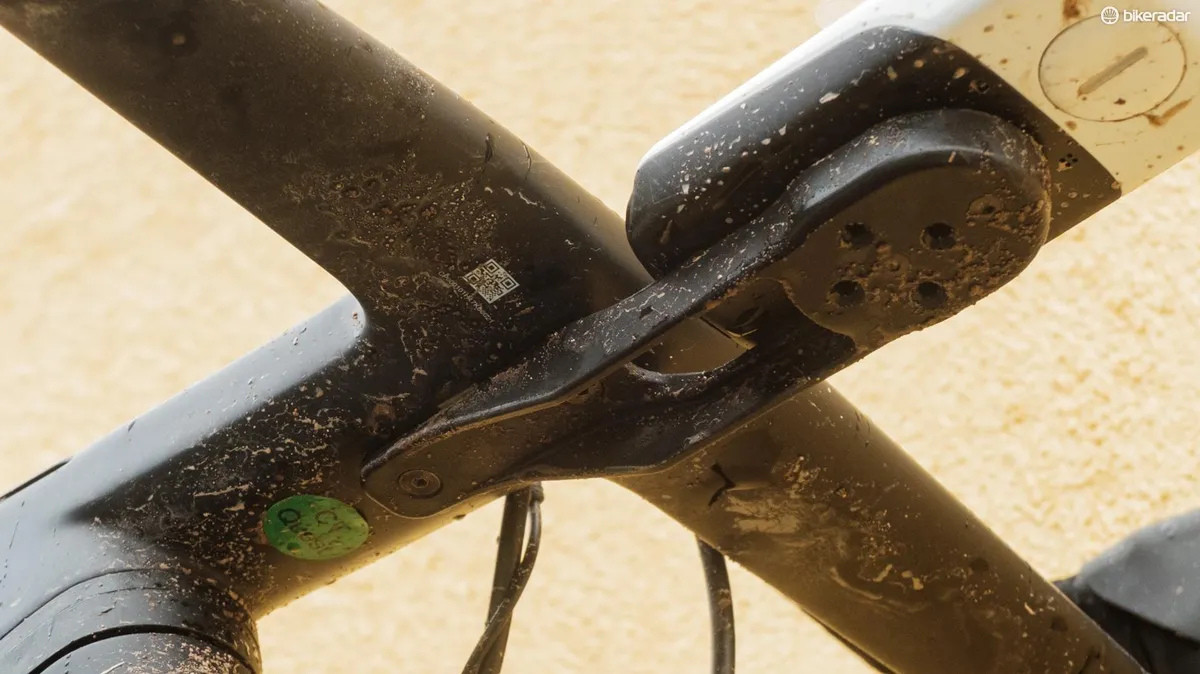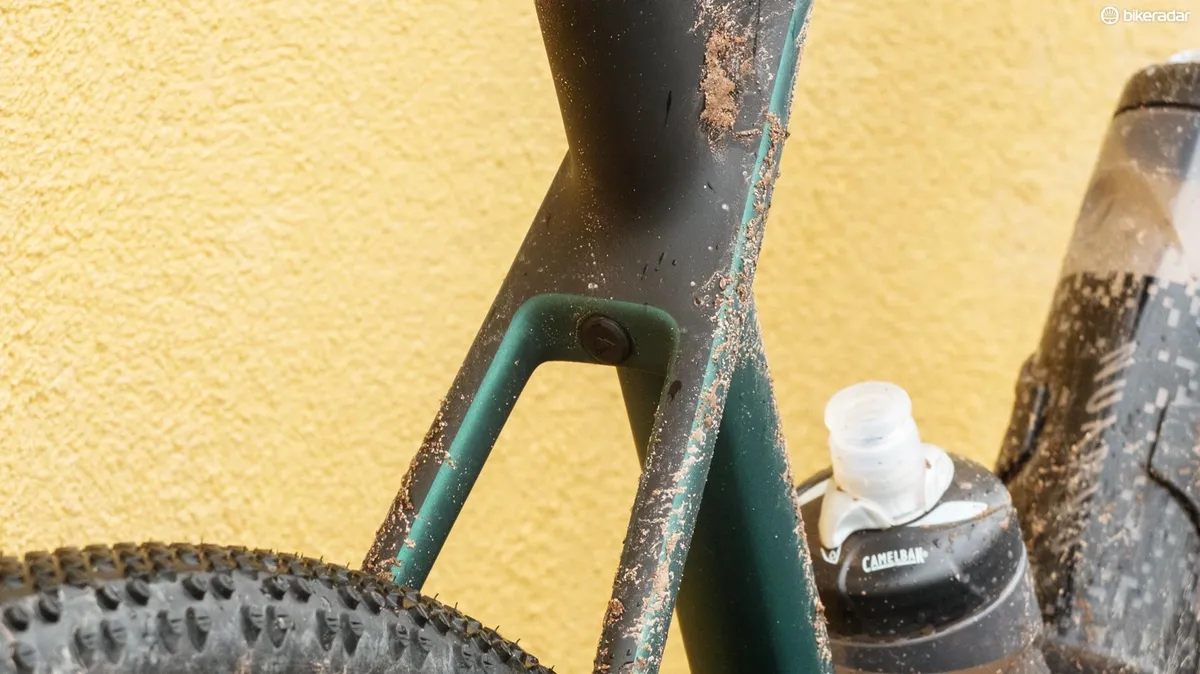The Grail is Canyon’s first gravel bike and is built around the Hover bar, an unusual new handlebar concept that is without a doubt the bike's headline feature.
- Canyon Grail CF SL 7.0 (2020) review
- Canyon Inflite CF SLX first ride review
- Canyon Bicycles: reviews and buying advice
You can take a closer look at the design of the bike, its unique features and a range overview in our Canyon Grail gravel bike news article and find out more about the Hover bar in all you need to know about Canyon's Hover bar.
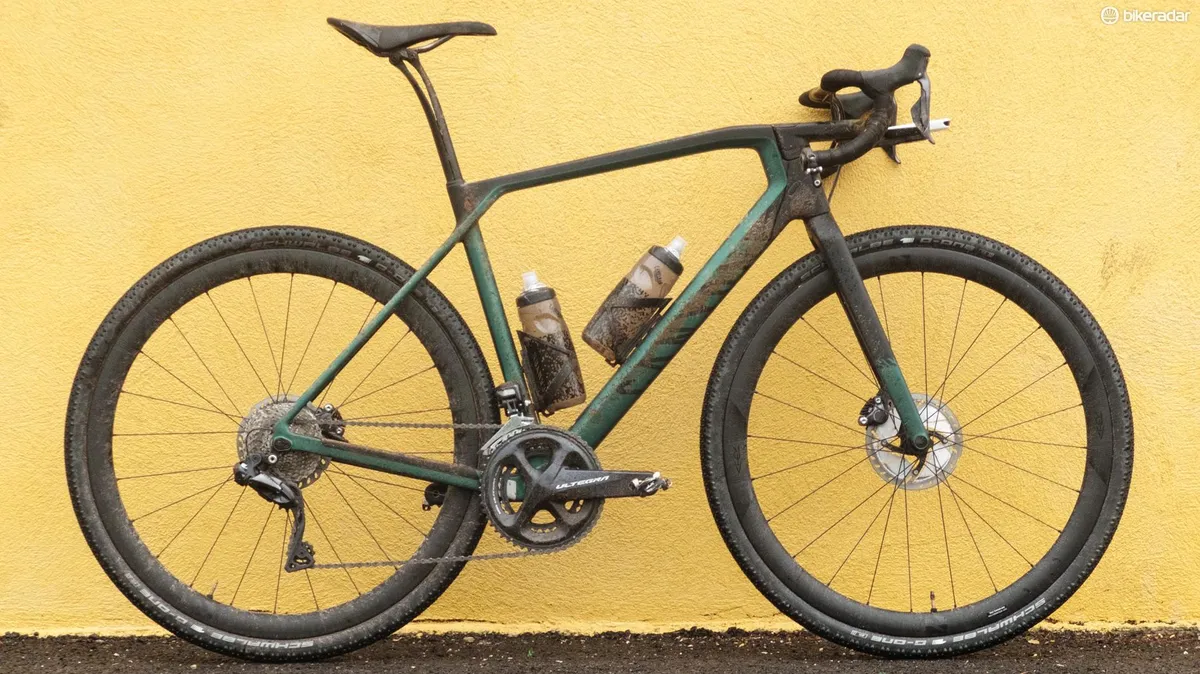
Canyon invited us to the hills in the South West of Cannes to test the Grail. This area is littered with seemingly endless kilometres of incredibly beautiful sandy fire roads that weave their way through the Sierra-like landscape.
My 50km test ride (in uncharacteristically damp and freezing cold weather) was a purists gravel ride, with nary a singletrack detour — the perfect terrain to test out this go-fast gravel bike.
The ride started with a steep and loose climb through a small gorge leading to a long and weaving climb. It was immediately clear that the Grail is a very competent climber — the upright position on the tops of the Hover bar allows you to get a lot of weight over the rear wheel, massively improving grip on steep terrain.
This combined with the 1:1 gear, the light Reynolds Assault ATR wheels and the fast rolling tyres made for an effortless ride.
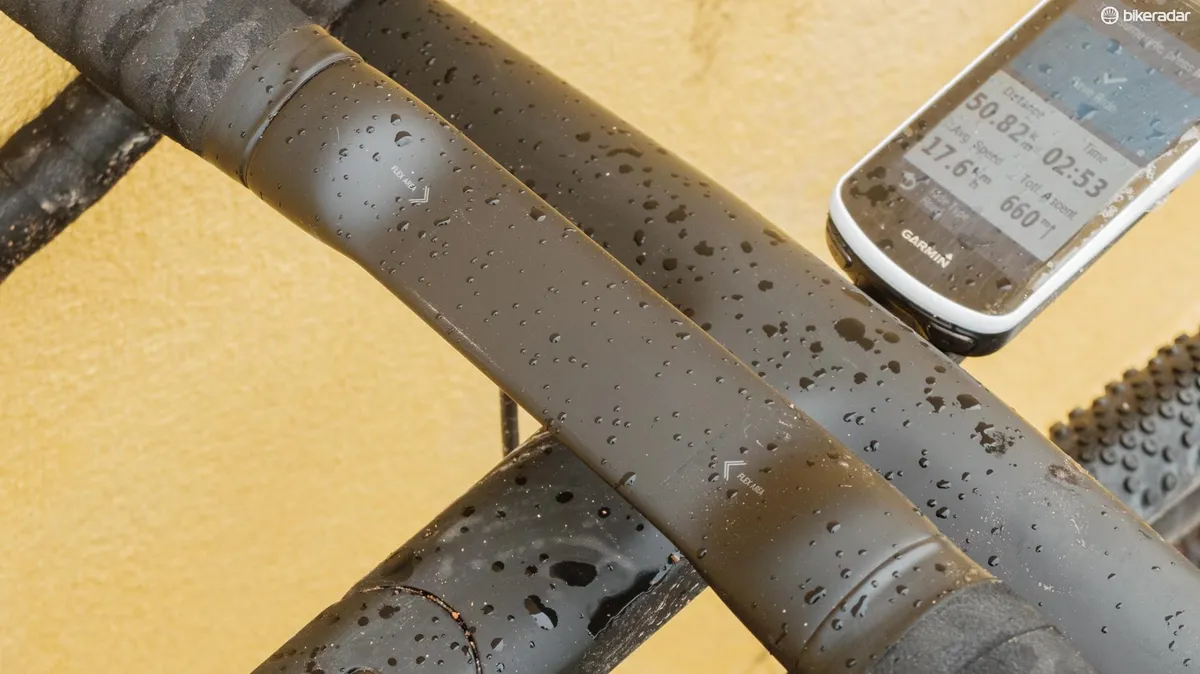
Riding on rough terrain, there’s no doubt that the Hover bar flexes while riding — this deflection is very visible and the bar does an excellent job of dissipating vibrations and bumps. The effect is most pronounced on the tops, but riding on the hoods is also very comfortable.
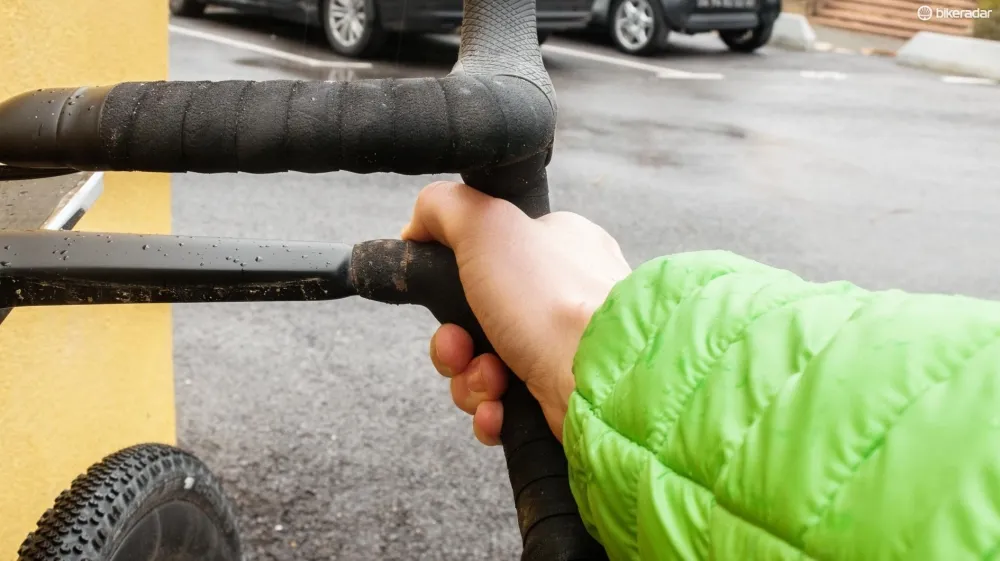
This flex is less noticeable in the drops, but they are still very comfortable, particularly if you wrap your thumbs around the extra bar between the hooks. I was also very pleased that the drops were roomy enough to avoid scrunching up my large-ish hands.
It’s worth pointing out that I prefer a slightly more aggressive position on the bike, meaning that my weight is distributed more over the front end. This will likely have exaggerated — or if you prefer, improved — the flex in the cockpit.
Clamping the front wheel between my knees and trying my damnedest to twist the bars, there was a small amount of give from the Hover bar, however this wasn’t noticeable on the bike. Even when hoofing my way up a few steep climbs, I failed to notice any meaningful amounts of twisting from the cockpit.
The 40mm wide tubeless tyres isolate you from most frame flex, but the Grail felt pleasingly direct without being harsh during hard efforts. The front end in particular felt great during hard braking, with no unnerving fluttering or chattering from the fork.
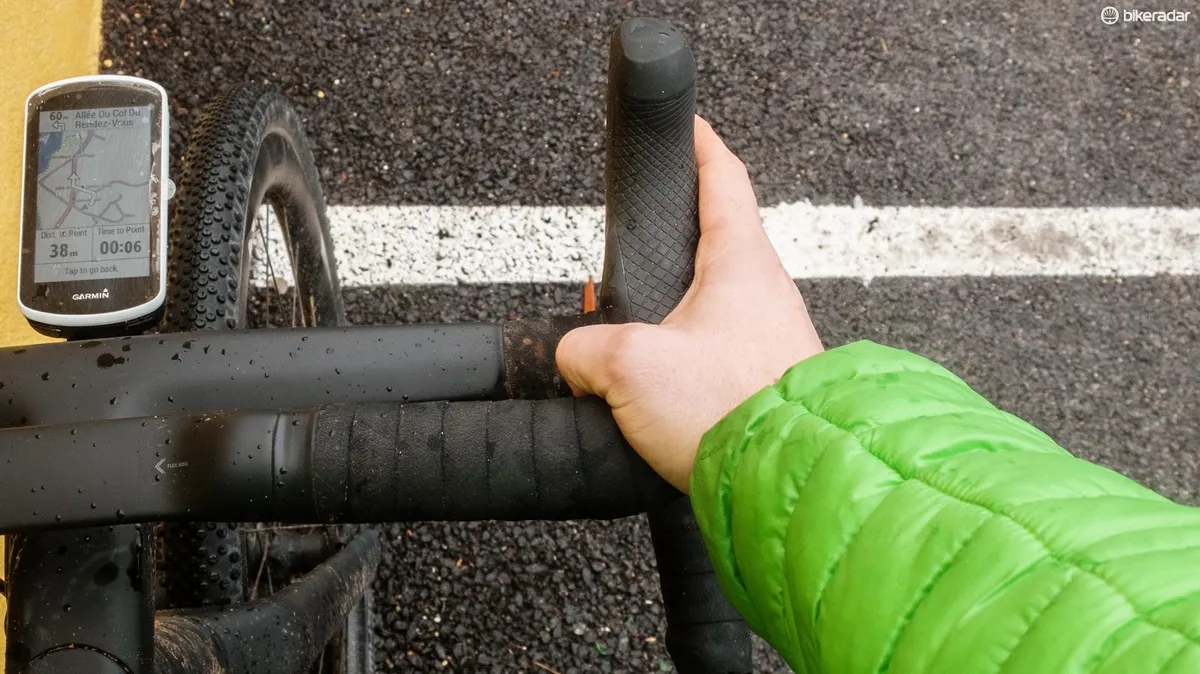
I tend to move my hands around when riding and I’m particularly fond of resting them on the transition from the tops to the ramps, with my thumbs gently hooked around the inside edge of the bar.
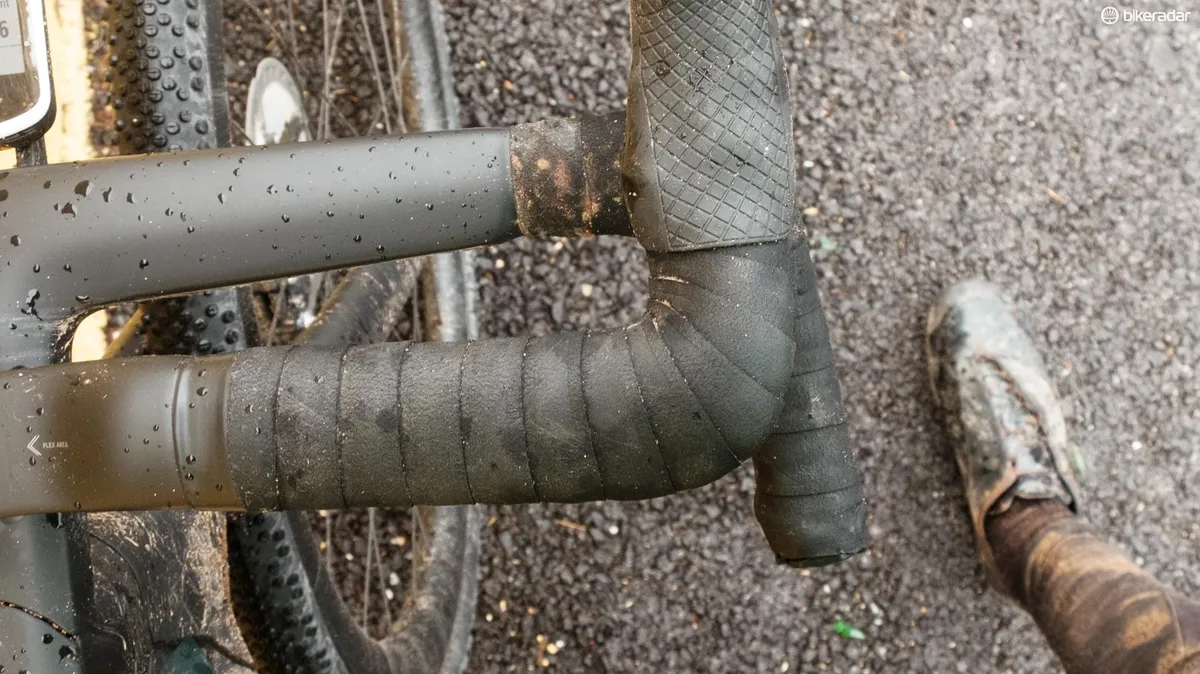
The Hover bar doesn’t lend itself well to this position — the inside edge of the bar is a very harsh corner rather than a more usual gentle curve. This creates a pressure point that was very uncomfortable if I rode like this for any length of time.
I realise this is a very small niggle, but one I felt could have been easily avoided by making the transition from the tops to the ramps just that little bit smoother.
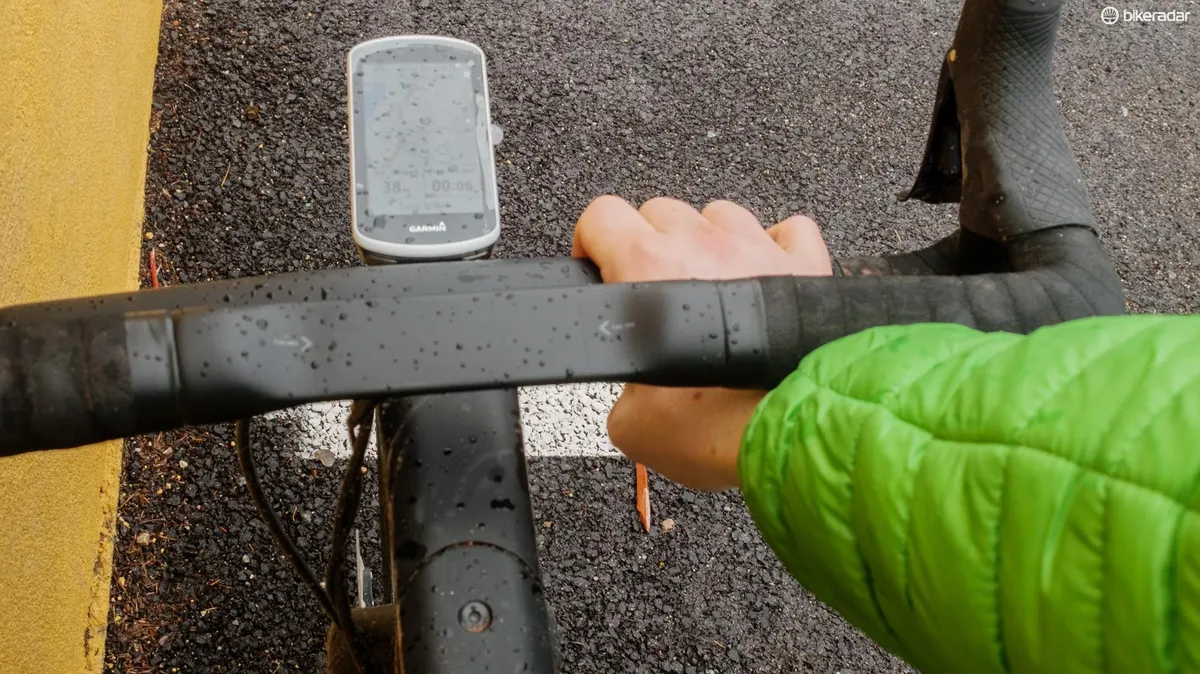
The bike ships with Schwalbe’s new-ish 40mm wide G-One Bite tyres. These have a slightly more defined shoulder tread, wider spaced knobs and more aggressive siping than the original G-One.
I found the tyres rolled quickly on compacted gravel roads and asphalt, but their performance off road was rather disappointing — the tightly packed low-ish-profile tread clogged on wet ground and the tyres were easily overwhelmed in corners and during hard braking.
The sandy conditions certainly weren’t the ideal terrain for the tyres and I understand why Canyon would want to spec a crowd-pleasing all-round tread, but if you plan on spending much time off-road in anything but the driest conditions, I suggest you swap these out for something more aggressive.
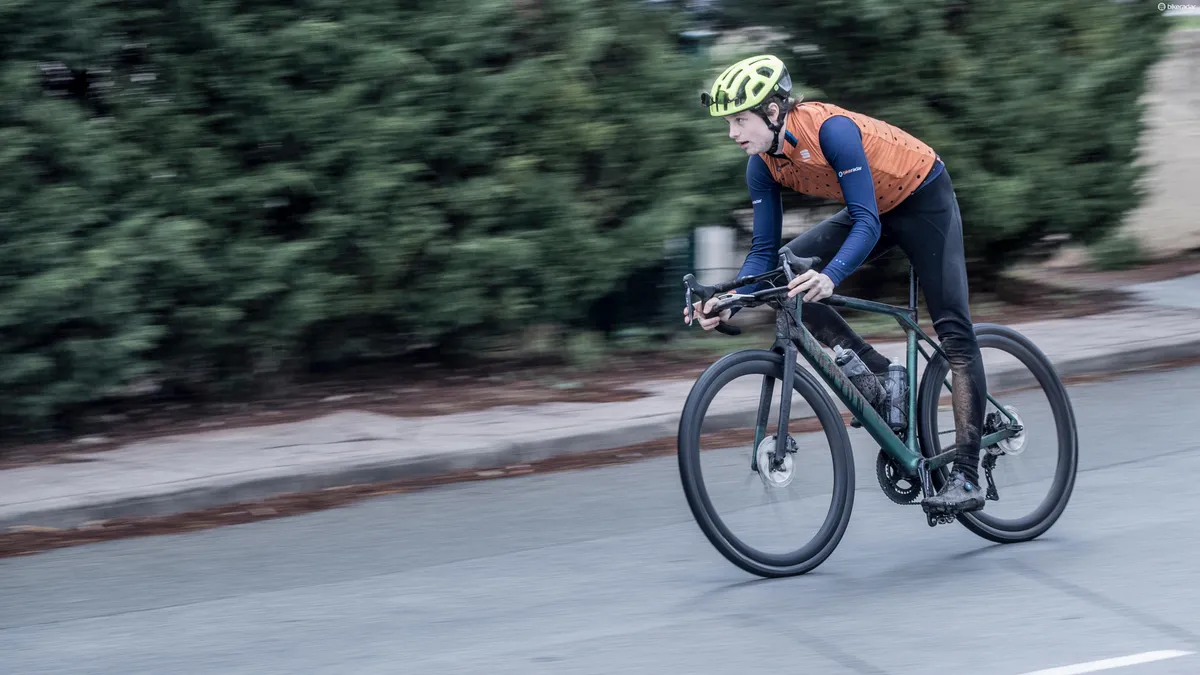
The tyres aside, the Grail is an absolute pleasure to descend on — the longer-than-average wheelbase undoubtedly contributes to the stable and confident ride, but the tall cockpit also really helps let you weight the front wheel without fear of going over the front.
The front centre and trail figures for the Grail are also relatively high at 615.7mm and 67.32mm respectively on the model I tested. I suspect this will have also added to the stable ride.
This stability doesn’t mean the bike is a boring ride — the calm ride characteristics mean you can approach rough terrain and corners at a truly reckless speed, and going fast is always fun.
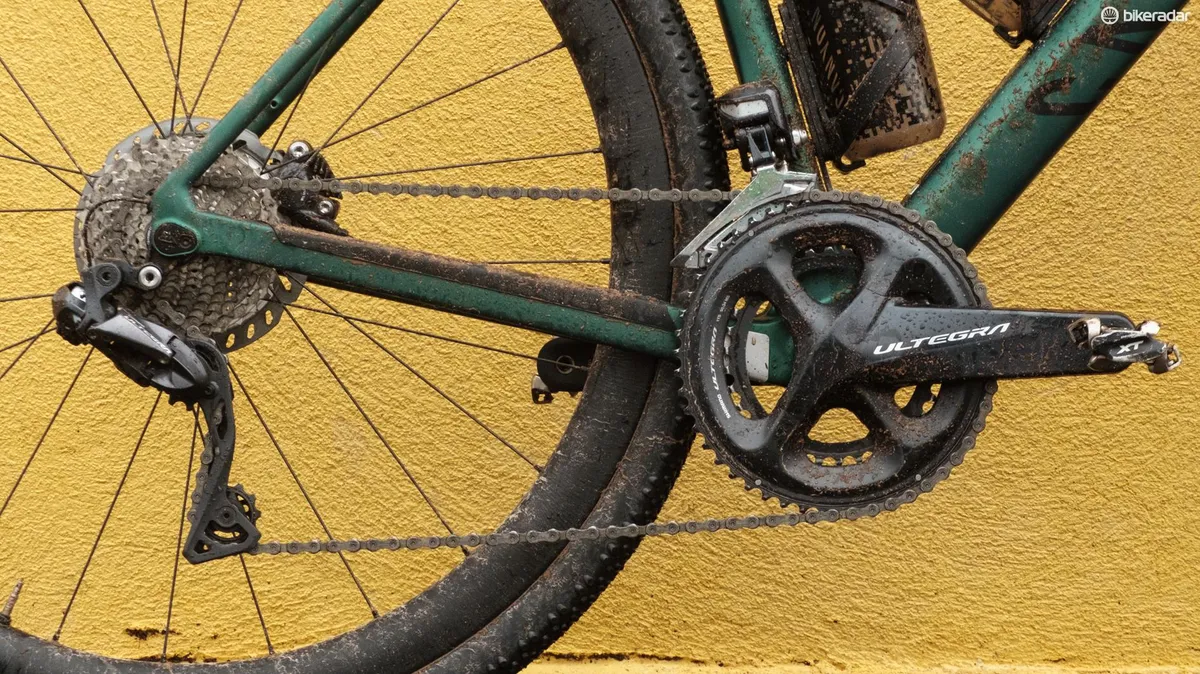
As expected, the Shimano Ultegra Di2 groupset performed flawlessly for the whole very sandy ride and further cemented my belief that electronic shifting is the best choice for gravel racing.
Canyon hasn’t focussed its attention solely on front-end compliance — you’ll find the brand’s unique and much loved VCLS 2.0 carbon leaf spring seatpost on all Grail builds, and as expected, the seatpost did a fine job of cushin’ my tush and I finished our 50km test loop frozen to the bone, but feeling fresh.
Canyon Grail early verdict
As our previous experience has shown, Canyon is not in the business of making bad bikes and the Grail is no exception — this is a properly competent gravel bike and a very impressive first go.
As is almost always the case with Canyon, the Grail also presents impressive value for money, with my blingy top-end test bike coming in at just €4,599 (approx £4,080 / $6,420 / AU$8,135). A very competitive price for a Di2 equipped bike with high-end carbon wheels and a fancy proprietary cockpit.
Aesthetics aren’t a metric I would typically rate a bike against, but given how unique the Grail looks, it bears mentioning.
I’ve personally grown quite fond of the way the Grail looks but expect the looks to be polarising, it’s a truly far out bike and I suspect more conservative riders could be turned off by the idea of a double-decker handlebar.
Canyon raised this very point during the presentation for the bike, claiming that the brand’s consumer base is typically younger and more willing to accept new tech and prioritise performance gains over tradition.
This is an approach I can get behind — the bike industry is lacking in truly unique innovation and I wish more brands were willing to take this stance.
Keep your eyes peeled in the coming months for a full review of the Grail.
Canyon Grail price and availability
The Grail CF SLX 8.0 Di2 is available direct from Canyon for €4,599.
